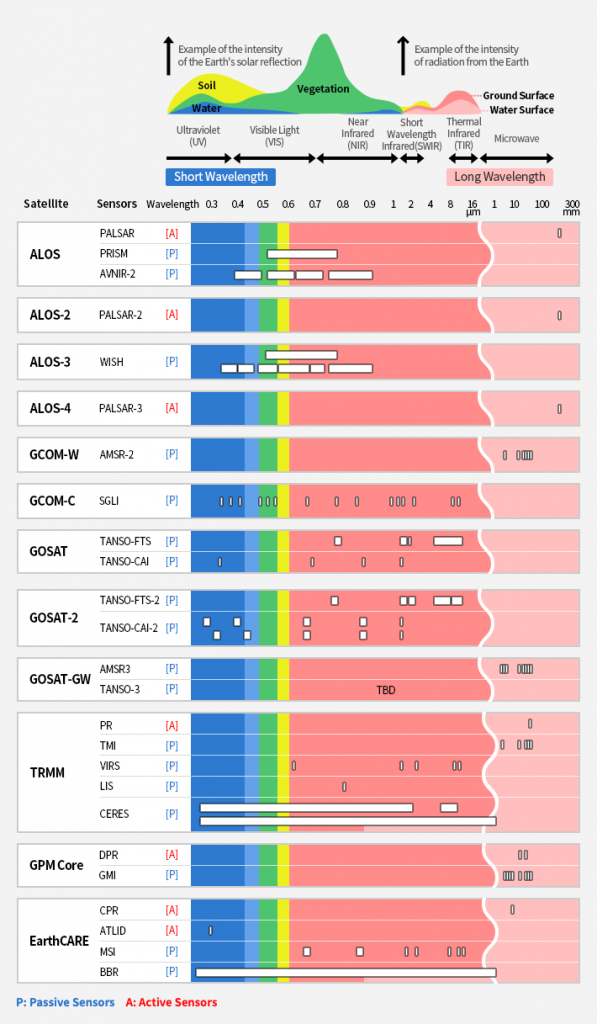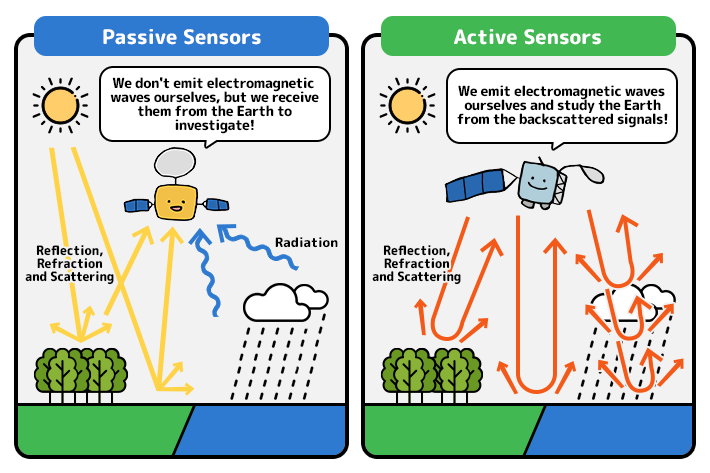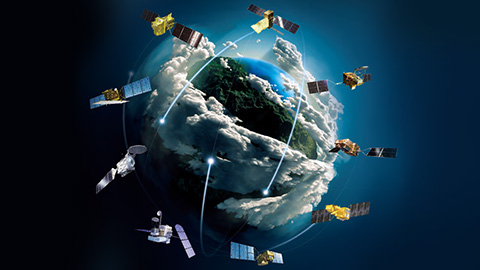Earth Observation Satellite and Mechanism of Observation
What is an Earth Observation Satellite?
An Earth observation satellite is designed to monitor changing global environment from space. For this purpose, Earth observation satellites are equipped with sensors to catch electromagnetic waves emitted and reflected from the Earth. In general, the technology for observing the size, shape, and characteristics of an object without touching is called “remote sensing,” and in particular, the observation using sensors aboard satellites is called “satellite remote sensing.”
How the Earth is Observed?
The electromagnetic waves emitted and reflected from the Earth contain a variety of information that indicates the state of the Earth at each moment. Since the information is different depending on the wavelength of the electromagnetic waves, it is important to analyze the state of the Earth multiply using sensors that can capture various wavelengths. Earth observation satellites play the role of a doctor of the Earth.
The following list shows at which wavelengths the sensors aboard JAXA’s Earth observation satellites observe the Earth. For example, vegetation on land has strong reflection characteristics in the red of visible light to near-infrared region, therefore it is possible to observe vegetation by the Global Change Observation Mission-Climate “SHIKISAI” (GCOM-C) and the Advanced Land Observing Satellite “DAICHI” (ALOS), which observe in that wavelength range.

[A] and [P] to the right of the sensor name in the list mean the sensor is Active or Passive.
●Active sensor: The sensor itself emits electromagnetic waves and observes components reflected back from particles such as raindrops in the atmosphere and the ground surface.
●Passive sensor: The sensor itself does not emit electromagnetic waves but observes weak electromagnetic waves emitted and scattered from the Earth.
A passive sensor receives signals naturally emitted from the Earth’s surface, therefore the observe area at once is relatively wide. An active sensor, on the other hand, has a limited observation width, but it can acquire three-dimensional information including the height direction, because it is possible to determine the distance between the sensor and the object from the time it takes for the electromagnetic waves emitted by the sensor to be reflected back by the object.










